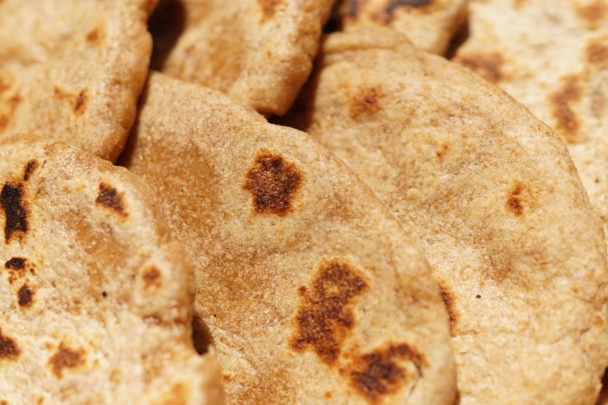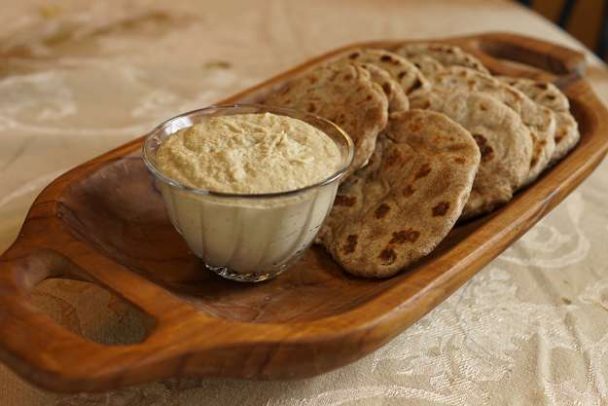Ignorance is not always bliss. For much of my life, I was ignorant to the greatness of our lead performer for today. We’ve finally perfected a soulmate for our Einkorn flatbread. Introducing…Hummus! By way of clarification, I do not mean to say that I had never heard of hummus. Of course I had. But I refused to try it. On what grounds? It’s humiliating, really. When I was first told about Hummus, my brain instantly went to a little stone we kept in our shower for scraping off dead skin – Pumice. Needless to say, that thought did not make me eager to branch out and try it. If you too are ignorant of hummus, don’t worry. It’s nothing like that.
It wasn’t until I was living in Spain that I finally decided to try hummus, and I was hooked. I made it part of my weekly shopping list. I generally ate it with crackers and enjoyed it immensely. Spain, of course, cannot boast the original hummus (the brand I bought was Simply Greek). In fact, that’s quite a debate. As early as the 13th century we have record of hummus. An ancient Egyptian cookbook called Kitāb al-Wusla ilā l-habīb fī wasf al-tayyibāt wa-l-tīb contained a recipe for a hummus-like dish made with pureed chickpeas, vinegar, pickled lemons, and some herbs. Some argue that Hummus was around before that, and countries do not agree as to who had it first.
In 2008, the Association of Lebanese Industrialists were upset about the success other countries were having with the commercialization of hummus. They insisted that hummus is strictly Lebanese and petitioned to have protected status. Since then, countries have been having competitions to see who can make the largest batch of hummus. Lebanon holds this record as of 2010 when they managed to make a 23,000lb batch. The controversy, however, rages on. While they’re distracted, fighting about who it belongs to, I think we should eat some!
Hummus has gained popularity in modern times. There’s even a Hummus Day. It was last week in fact – Friday, May 13th. So, I’m a little late on this post, but it’s never too late to celebrate! The ancient dip can now be found everywhere, but making your own ensures clean ingredients. We developed our own quick and easy recipe for the dip and love it. We would love to share it with you.



Thanks for all the interesting recipes. I ordered some einkorn berries from you and can’t wait to get it! In the meantime I found some ground einkorn flour at an amish bulk food store called The Ashery and have made two batches of delicious bread from it.
The post above mentions soaking the einkorn. Do you mean just letting the dough sit on the counter for 8 hours? And I was also wondering, when you say it helps to break down the phytic acid, is that sort of like a shortcut sourdough? Thanks! I’m so glad you are growing this wonderful grain and making it available! It’s such a gift and that makes you wonderful too! 🙂
Hi Ronda, yes soaking is a similar method to sourdough. Sourdough is more effective but soaking accomplishes the same basic thing. Yes, The way soaked recipes work is you mix the dough and it calls for something acidic or cultured like yogurt or kefir and that accomplishes a similar thing as sourdough as it sits for 8 hours.
Love Einkorn!